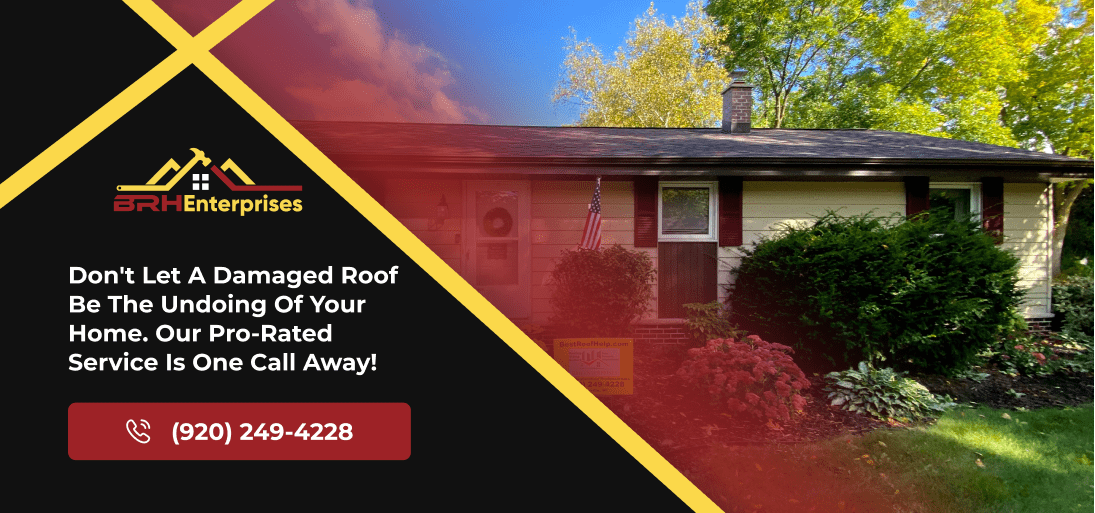Garage Door Installation Preparation: A Complete Guide
Estimated Reading Time : 6 Min.

The right preparation is key to every garage door installation. Taking the time to prepare before your new garage door arrives can prevent expensive mistakes, reduce installation time, and ensure the final result functions perfectly for years to come. Whether you’re replacing an outdated door or installing one in a newly built garage, preparation makes all the difference in the outcome.
Southern Wisconsin homeowners face unique considerations when preparing for garage door installations, including weather-resistant features and insulation requirements for our seasonal changes. Understanding these regional factors is key to selecting the right door and preparing appropriately for installation day.
A well-planned garage door installation starts with accurate measurements, enough space clear for installation and for the door to fit, and addressing electrical requirements. Each step in the preparation process directly impacts both the installation experience and the long-term performance of your garage door system. From ensuring your opening is square to confirming you have the right electrical connections for an automatic opener, these details matter significantly.
This comprehensive preparation guide covers everything homeowners need to know before scheduling their garage door installation, including pre-installation measurements, space requirements, electrical considerations, and how to select a garage door style that complements your home’s architecture while meeting your functional needs.
Taking Accurate Garage Door Measurements
Accurate measurements are critical to a successful garage door installation. Start by measuring the width of the opening at its narrowest point, typically at the bottom. Then measure the height from the floor to the top of the opening at both the left and right sides. For headroom, measure the distance between the top of the door opening to the lowest part of your ceiling. Many homeowners underestimate how much space is required for the mechanics above what you normally see, especially when installing automatic openers. It is typically recommended that at least 12 inches of headroom with 3 inches for the opener mechanisms be available (15 inches total), but in some cases, a low-headroom track system can lower that to 9 inches.
Measurements on each side are equally important. Most garage door tracks require a minimum of 3 ¾ inches of space on either side of the door opening. For the depth of your garage, you will need a space that is equal to the height of your garage door opening plus 16 inches. This allows the door to fully open.
When recording measurements, always use exact figures rather than rounding. Note any obstructions like light fixtures, pipes, or electrical outlets that might interfere with track installation. Take photos when you take measurements, as it can greatly assist your installation team and possibly get the job done quicker.
Wisconsin homeowners should consider how seasonal temperature changes might affect garage door clearances. Materials expand and contract with our temperature changes, so accounting for this during the pre-installation measurement phase ensures proper operation year-round. Proper measurements now prevent expensive adjustments later.
Creating Your Comprehensive Installation Prep Checklist
A well-organized checklist is your best tool to make sure you have a smooth garage door installation process. Start your preparation at least two weeks before your scheduled installation date. Most installations in Southern Wisconsin take between 4 and 6 hours, so plan to be available during this time frame.
Verify all materials have been ordered correctly by reviewing your order confirmation. Check that the door style, color, hardware, and opener match what you selected. Clear the garage completely of vehicles and remove items hanging on walls near the installation area.
Ensure power is available for the installation team, with a functioning outlet within 6 feet of where your opener will be mounted. If you’re replacing an existing door, disconnect automatic openers the day before installation. For homes with security systems connected to garage doors, notify your security company about the upcoming changes.
Prepare a path for the removal of your old garage door. Remove snow or ice from driveways and walkways during winter installations; an important consideration for Southern Wisconsin homeowners. Finally, keep pets away from the work area and inform household members about the installation schedule to minimize disruptions and ensure safety throughout the process.
Clearing and Organizing Your Garage Space
Creating a clear workspace is essential for efficient garage door installation. Start by removing all vehicles from the garage at least 24 hours before the scheduled installation. Clear a minimum of 8 feet of space from inside the garage door opening and ensure the driveway has at least 10 feet of clearance for installers to maneuver materials and equipment. Remove bikes, lawn equipment, and storage items that might obstruct access to the walls and ceiling where tracks and opener systems will be installed.
Wall-mounted items near the door opening, such as shelving, garden tools, or sports equipment, should be temporarily relocated. Check ceiling areas where opener rails will be installed and remove any hanging storage systems or light fixtures that may interfere. For Southern Wisconsin homeowners, also consider clearing space for installers to move efficiently in case of bad weather.
During installation, dust and debris are inevitable. Protect valuable items by moving them to another room or covering them with plastic, a tarp, a drop cloth, or old sheets. Create a temporary storage solution in another part of your home for garage items that need protection from construction elements.
Electrical tools will be used during installation, so ensure extension cords and cables are properly secured and won’t create tripping hazards. Organizing your garage space before installation not only protects your belongings, it also allows installers to work more efficiently, potentially reducing installation time.
Understanding Electrical Requirements and Safety Considerations
Proper electrical preparation is important for a functional garage door system. Most modern garage door openers require a standard 120-volt outlet with a 15-amp circuit. This outlet should be located within 6 feet of where your opener motor will be mounted, typically centered on the garage ceiling. If your garage lacks an accessible outlet, consult with a licensed electrician before installation day to add one. Keep in mind that older garages in Southern Wisconsin homes sometimes have outdated wiring that may not support newer opener systems.
Check if your garage circuit is dedicated or shared with other high-draw appliances. A dedicated circuit is preferable as it prevents tripped breakers when multiple devices operate simultaneously. Your garage door opener should have its own grounded outlet. Avoid using extension cords as permanent power solutions, as they create fire hazards and often violate local building codes.
Safety preparation is equally important. Make sure your garage either has enough light in it, or there are ways for lights to be plugged in to help your installers see. This is more important in the winter when it gets dark earlier. If temporary lighting is needed, use proper fixtures with secure mounting rather than clamp lights that could fall.
For homes with children, plan to have safety sensors properly positioned and tested. These sensors prevent the door from closing if an object or person is in the path.
Selecting the Ideal Garage Door Style for Your Wisconsin Home
Choosing the right garage door style involves balancing looks with practicality, especially in Southern Wisconsin’s climate. The door material significantly impacts long-term performance and maintenance needs. Steel doors offer excellent durability and weather resistance while requiring minimal upkeep, a practical choice for Wisconsin homeowners facing harsh winters. Insulated steel doors with high R-values provide thermal protection, potentially reducing heating costs during cold months.
Wooden garage doors deliver unmatched natural beauty but require regular maintenance to withstand Wisconsin’s seasonal moisture fluctuations. Composite doors offer a compelling middle ground, providing wood’s visual appeal with improved weather resistance. For areas exposed to heavy winds, look for doors with appropriate wind ratings to prevent damage during storms.
When matching your garage door to your home’s architecture, consider how the style complements your existing exterior elements. For traditional homes, carriage house doors create a classic, timeless appearance. Contemporary homes typically look good with sleek, minimalist designs with clean lines and modern window arrangements.
For improved energy efficiency, choose doors with weatherstripping and bottom seals that prevent air infiltration, particularly important for attached garages where temperature transfer affects your home’s overall energy performance.
Final Pre-Installation Inspection and Professional Consultation
Before your installation team arrives, conduct a thorough final inspection of your garage door opening and surrounding areas. Check the header and side jambs for any signs of water damage or wood rot, which are not uncommon in Southern Wisconsin garages. Verify that the floor is level across where the door will rest when it is down; even small differences can affect door operation. Look for any loose wiring, damaged drywall, or structural issues that might have been overlooked during earlier preparations.
When speaking with your installation team, prepare specific questions about your new door system. Ask about the expected timeline, what warranty coverage includes, and recommended maintenance schedules for Wisconsin’s climate. Discuss how extreme temperature changes might affect the specific model of your door and what adjustments could be needed seasonally. Request a demonstration of manual operation in case of power outages, which can occur during storms.
Professional installers can provide valuable insights about your specific garage. They might suggest additional weatherstripping for better insulation or recommend lubricants that perform well in our regional climate. Be prepared to discuss access to electrical controls, preferred placement of wall buttons, and any special considerations for your property. Clear communication before and during installation helps ensure your garage door functions properly for years to come while protecting your home from our area’s weather.
Ensure a Successful Garage Door Installation with BRH Enterprises LLC
Preparing for a garage door installation in Southern Wisconsin needs attention to detail and precise planning. Whether you’re upgrading to enhance your home’s security or to improve its curb appeal, understanding the steps for proper garage door installation preparation is important. From taking accurate measurements of your garage space to selecting the right style that complements your home and withstands local weather conditions, every aspect matters.
Don’t let the complexities of preparation overwhelm you. BRH Enterprises LLC is here to guide you through every step, ensuring a seamless and efficient installation. With our professional advice and support, we’ll help you avoid common pitfalls and ensure that everything is in place for a successful installation day.
Ready to start your garage door installation project in Southern Wisconsin? Give us a call at (920) 249-4228 and schedule a consultation so your installation goes smoothly from start to finish.


